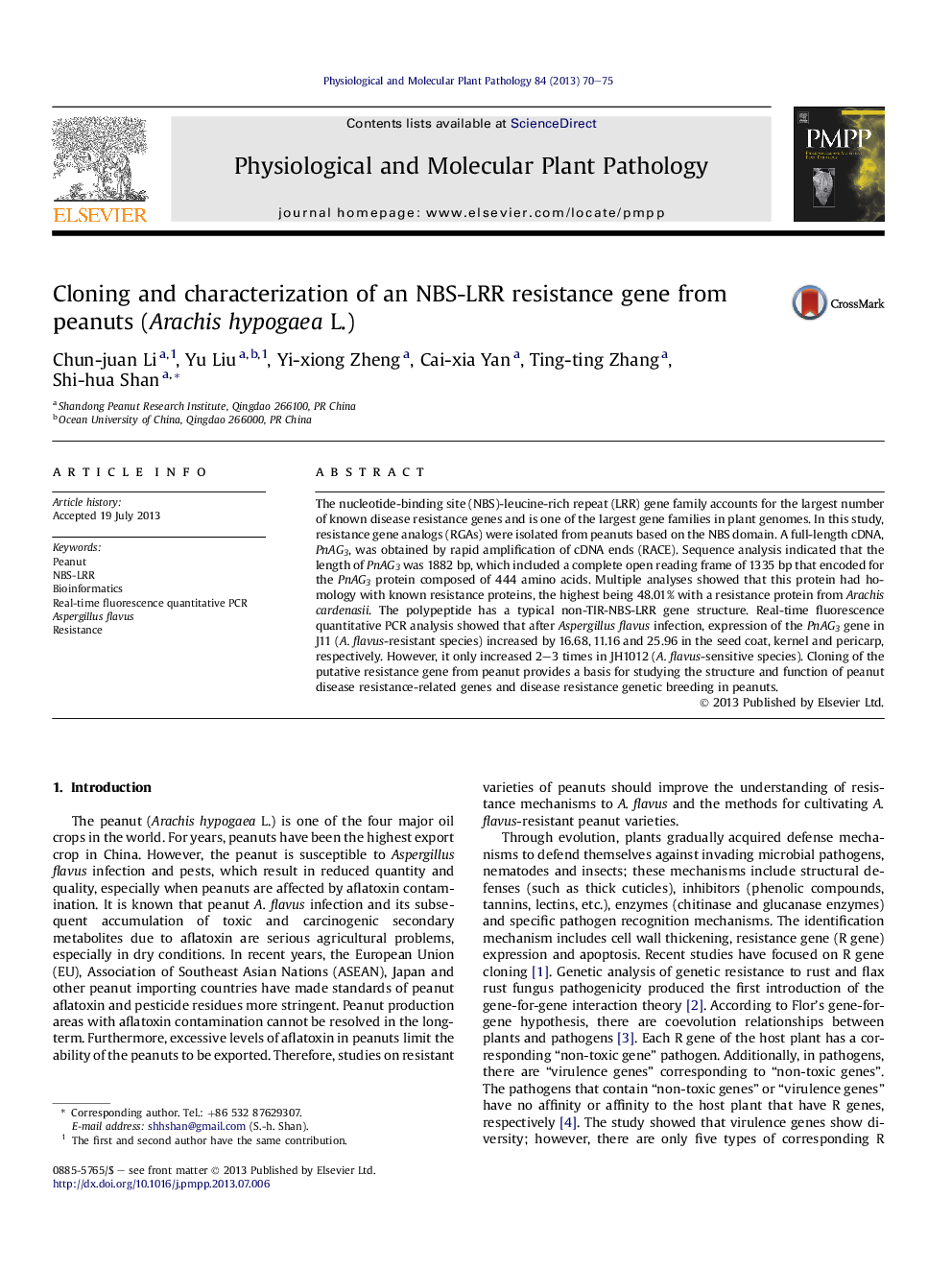| Article ID | Journal | Published Year | Pages | File Type |
|---|---|---|---|---|
| 2836387 | Physiological and Molecular Plant Pathology | 2013 | 6 Pages |
•We cloned an NBS-LRR type R gene PnAG3 from peanut.•We using RT-qPCR analysis the expression changes of PnAG3 after A. flavus infection.•we verified that PnAG3 has positive relationship with peanut resistance to A. flavus.
The nucleotide-binding site (NBS)-leucine-rich repeat (LRR) gene family accounts for the largest number of known disease resistance genes and is one of the largest gene families in plant genomes. In this study, resistance gene analogs (RGAs) were isolated from peanuts based on the NBS domain. A full-length cDNA, PnAG3, was obtained by rapid amplification of cDNA ends (RACE). Sequence analysis indicated that the length of PnAG3 was 1882 bp, which included a complete open reading frame of 1335 bp that encoded for the PnAG3 protein composed of 444 amino acids. Multiple analyses showed that this protein had homology with known resistance proteins, the highest being 48.01% with a resistance protein from Arachis cardenasii. The polypeptide has a typical non-TIR-NBS-LRR gene structure. Real-time fluorescence quantitative PCR analysis showed that after Aspergillus flavus infection, expression of the PnAG3 gene in J11 (A. flavus-resistant species) increased by 16.68, 11.16 and 25.96 in the seed coat, kernel and pericarp, respectively. However, it only increased 2–3 times in JH1012 (A. flavus-sensitive species). Cloning of the putative resistance gene from peanut provides a basis for studying the structure and function of peanut disease resistance-related genes and disease resistance genetic breeding in peanuts.
